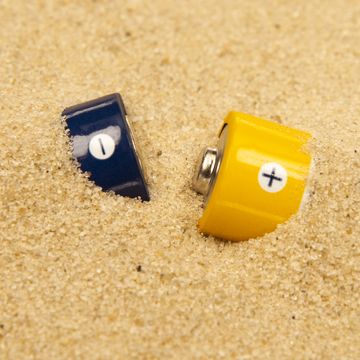Desalination—the process of removing the salt from salt water, making it safe for human consumption—is one of those ideas that seems to make perfect sense in theory. Being able to drink the waters of the ocean could solve countless problems across the globe: shortages, droughts, and even the chance to lower rising ocean levels.
The only problem? Desalination has a dark side known as brine, an environmentally harmful byproduct. A new approach from Columbia University, however, could radically change the limits of desalination.
The word "brine" commonly refers to the salty solution used during fermentation to keep foods fresh, like kimchi or sauerkraut. Industrial brine also involves salt, but is far more dangerous than its culinary cousin.
Industrial brine can have a salinity up to 10 times that of the ocean. It ruins soil, impairs vegetation's ability to absorb nutrients, and is toxic to animals. Currently, desalination services across the globe pump out 142 billion liters of brine every day.
It's a major problem, one that keeps desalination from the mainstream. Scientists have tried for decades to solve it, including the late, legendary Alan Turing. But now a group of researchers from Columbia University have developed a process designed to purify industrial hypersaline brines. They call it Temperature Swing Solvent Extraction (TSSE).
TSSE can desalinate extremely salty brine up to seven times as salty as the ocean. For comparison, the current methods can only handle brine twice as salty. Unlike other approaches that use reverse osmosis or distillation, TSSE has found success with using a solvent. Solvent extraction is commonly used during chemical engineering.
“I thought solvent extraction could be a good alternative desalination approach that is radically different from conventional methods because it is membrane-less and not based on evaporative phase-change,” says Ngai Yin Yip, assistant professor of earth and environmental engineering at Columbia, in a press statement. “Our results show that TSSE could be a disruptive technology—it’s effective, efficient, scalable, and can be sustainably powered.”
The TSSE solvent isn't dependent on the evaporation of water, meaning it doesn't need high temperatures to work. It can be activated by low-grade heat (less than 70 degrees celsius) that is easy to attain, sometimes to the point of it being natural. In a study, TSSE removed up to 98.4 percent of the salt in brine.
“We think TSSE will be transformational for the water industry. It can displace the prevailing practice of costly distillation for desalination of high-salinity brines and tackle higher salinities that RO cannot handle,” Yip adds. “This will radically improve the sustainability in the treatment of produced water, inland desalination concentrate, landfill leachate, and other hypersaline streams of emerging importance. We can eliminate the pollution problems from these brines and create cleaner, more useable water for our planet.”
Source: CNET
David Grossman is a staff writer for PopularMechanics.com. He's previously written for The Verge, Rolling Stone, The New Republic and several other publications. He's based out of Brooklyn.













